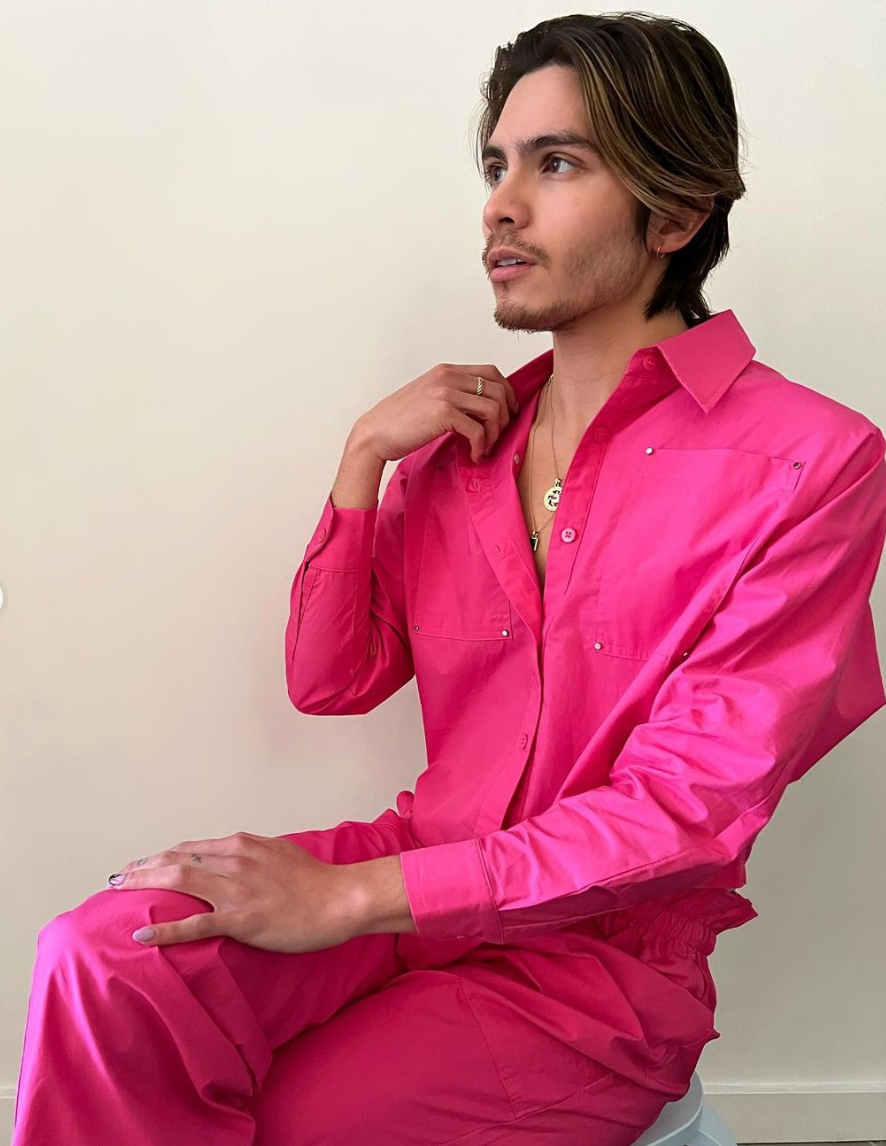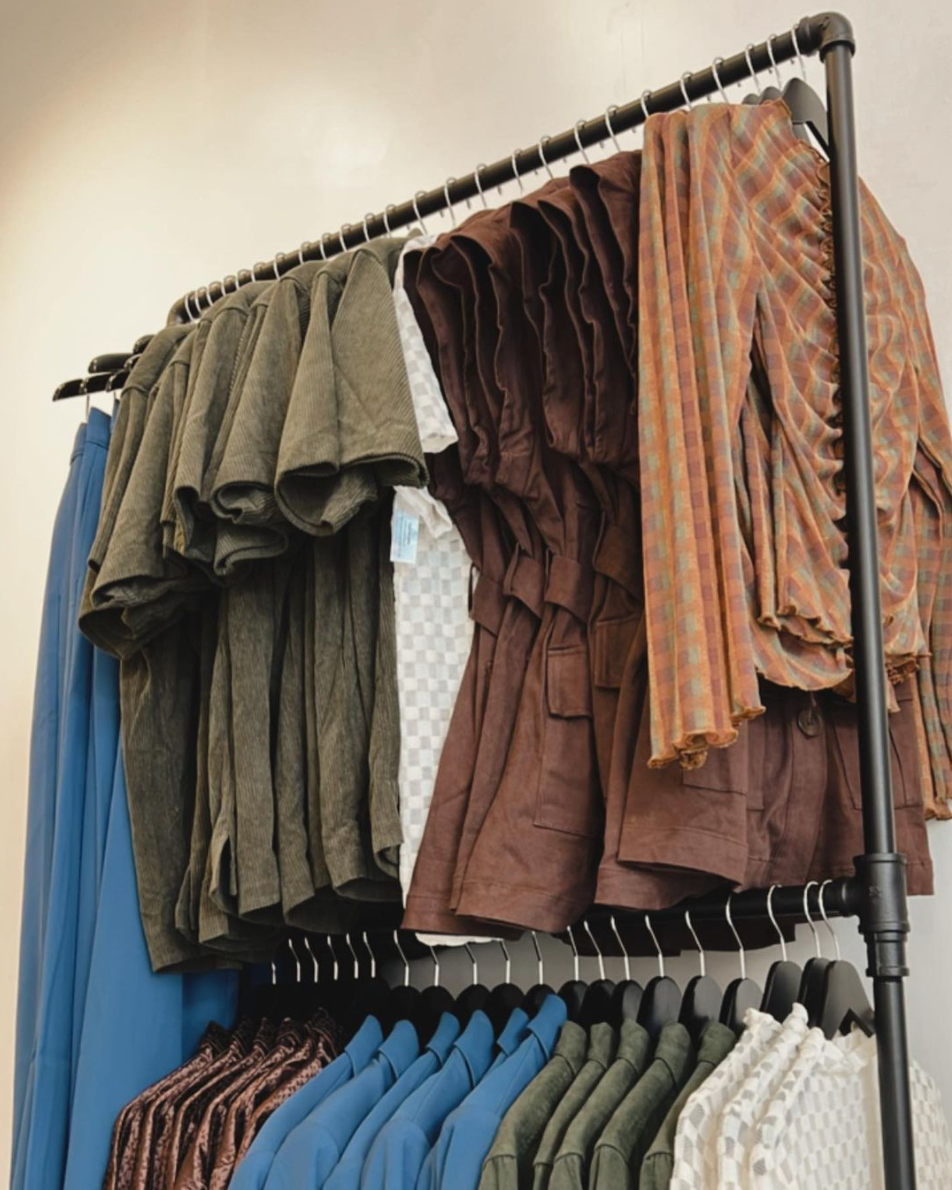Shopping Their Shelf

Despite widespread conversations around identity, retail environments often reinforce the gender binary. Why isn’t retail seizing the opportunity?
Stuck in the Past
The male/female gender binary has been the dominant cultural structure in the west for a long time, but conversations around gender are increasing. As the concept of “gender” comes under fire and definitions of gender continue to evolve, it’s time for retail to reimagine their approach and move toward a more inclusive future. So why is retail’s concept of gender stuck in the past?

The short answer is that most retail strategy is built on a “comp structure” that uses past sales’ performance to determine what to design and buy—and that data has been historically divided into “men’s” and “women’s” categories. Breaking out of old modes of business can be costly and time intensive but, as other movements have shown, inclusivity can be a huge benefit for both people and profits.
A parallel example: When demand for inclusive size ranges boomed, retailers were slow to expand their range. The reasoning was that costs would be too high to develop and produce extended sizes, even though the plus-size market is growing twice as fast as the total of U.S. apparel sales.
Radical Self Expression
Individuals are increasingly using shopping to curate and reinforce their sense of identity. Our ability to define our own identities and expression, rather than having it boxed in and predefined by brands or society, is paramount.
As societal conversations regarding traditional identity markers of ability, sexual orientation, and gender shift from binary designations to personal expressions, consumers’ clothing preferences are also shifting. By continuing to segment clothing into “men’s” and “women’s,” retail is limiting customers' options and/or forcing them to browse across categories to suit their individual styles.

Source: Fibers of Being
While some brands are recognizing the variations in individual needs and expression—think personalizable vitamin packets, shampoos, etc.—apparel limitations are leading customers to eschew brand names and opt for DIY, slow fashion, or niche boutique brands instead. Gen-Z in particular is prioritizing fluid identity expression over labels. And the personalization isn’t just what you wear, but how you wear it. Partners and friends across gender identities may even share closets or swap items, but they’ll wear the item with a personal twist.
Mounting Cultural Pressure
As culture shifts away from the binary, there are a few factors applying pressure to retail. Policy is driving some progress—a CA bill requires some large retailers to adopt gender neutral kid’s clothing sections—and fashion houses that thrive as trendsetters are noticing the benefits of gender-inclusive pieces and collections.
For example, Stella McCartney Shared offers “a new vision for a rising generation,” a capsule collection that “is a youthful, genderless exploration… expressing individuality, diversity and positivity in the face of climate change and social revolution.” Gucci MX collections emphasize “the dissolving lines of the gender divide in the name of self expression.”
These high-end companies, however, price out many consumers. That’s where many turn to big brands like H&M, Zara, and Nike, who have launched gender neutral/unisex lines in the past, but these attempts often fall flat. The biggest push is coming from small boutiques, like Fibers of Being in SF and The Phluid Project in NYC. Despite their small hubs and mostly local reach, they’re showing retailers of all sizes the benefits of serving a broader spectrum of people.
What Can Retailers Do?
Elizabeth Stewart (she/her), the owner and operator of Fibers of Being, told us about breaking the binary in retail, and her thoughts on how retailers of all sizes can evolve and engage. Here are her top three tips:
1. Dress the Spectrum
Everyone falls somewhere along the gender spectrum, which means inclusive brands can create something for everyone. Rework the retail environment and provide options that span traditionally feminine and masculine expressions, intermixed with androgynous, unisex, non-binary choices.
At Fibers of Being, Stewart carries “all genders of clothing, but we merchandise them all together and focus more on fit and sizing rather than gender. No matter how you identify, you can have your own personal style and not feel judged or nervous when you walk through these doors, or have to choose a side.” Good American requires any store that wants to stock the brand to buy the entire size range and display all sizes together—they cannot be broken up into straight and plus sections.

Source: Fibers of Being
2. Focus on Fit
To accommodate different body shapes and sizes across all gender identities, consumers and brands can focus on the fit and sizing of a garment. This makes it easier for individuals to find the clothes they want, for their body—especially during body changes like transitioning, pregnancy, or weight fluctuations. Industry sizing is outdated and not standardized, anyway. To ease the transition and empower consumers, provide customer service and education on how to take body measurements.
Here’s how Stewart applies this approach at Fibers of Being: “Not everything is going to fit everyone, which is normal. So I train employees on fit and sizing and how a piece is shaped, so we can tell customers when they come in ‘you should size this way, or it’ll be a little tighter in the hips’ and help share the knowledge to help them make decisions.”

Source: Fibers of Being
3. Be Authentic
Consumers are smart and can see when a brand is being inauthentic or is rainbow-washing. How can brands make the connection with gender inclusivity, without it just being monetary? Well, they can’t. It has to be authentic.
“You need to have whys. Why are you doing this? If it's just to make money, I think people will be able to tell it's inauthentic,” Stewart says.
Authenticity and connection pay off, resulting in improved customer experience and increased brand revenue. Brands that focus on connecting with and supporting progress for their customers have 11% higher revenue on average, which is more than 5x the revenue of brands that rank low on connection and progress.
Opportunity Beyond Profit
A retail model that allows consumers to shop for their individual identities and expressions represents a huge opportunity. If retailers can move away from outdated structures and genuinely support an evolving culture, they will reap rewards that go beyond profit—like influence, cultural relevance, and a loyal audience. When customers feel an emotional connection with a brand, they’re more likely to seek it out, driving preference and share of wallet. A win for retail—as our means for self expression and validation—is a win for us all.
Want to hear more? Check out our interview with Elizabeth Stewart on The Edit, on Spotify – or wherever you listen to your podcasts.
